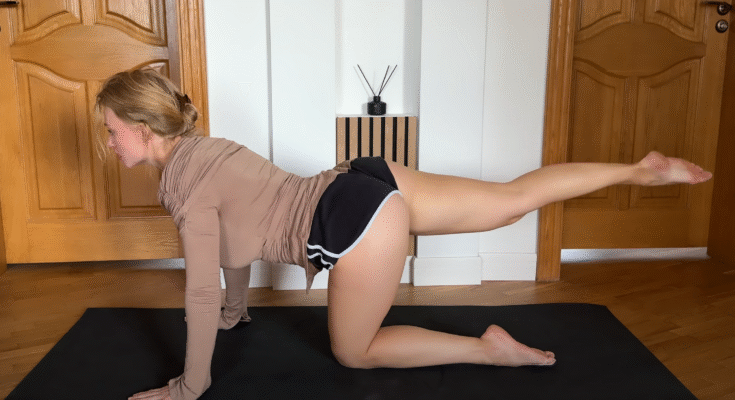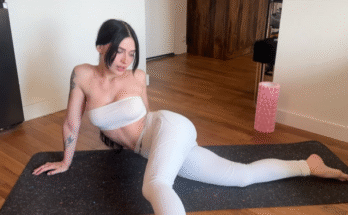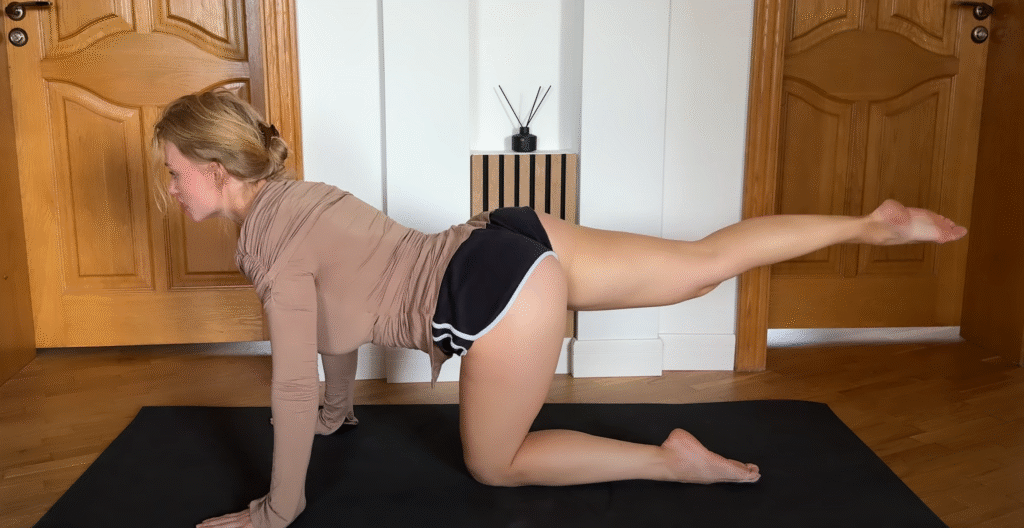
In today’s fast-paced world, many people spend hours sitting—whether at a desk, in a car, or on the couch. Over time, our muscles tighten, our joints stiffen, and our posture begins to suffer. The good news is that you don’t need a fancy gym or yoga studio to regain your flexibility. With just a bit of space, some dedication, and a calm mindset, you can stretch at home and improve your flexibility safely and effectively. This easy flexibility guide is designed for beginners who want to feel lighter, move more freely, and release daily tension—all from the comfort of their own home.
Why Stretching Matters
Stretching is not only about touching your toes or doing the splits; it’s about improving your overall quality of movement. It enhances blood circulation, reduces muscle stiffness, and helps prevent injuries. Regular stretching keeps your joints mobile and supports better posture. For beginners, it’s also a beautiful way to reconnect with the body and become more aware of how it feels and moves.
When you stretch consistently, you’ll notice your body becoming more open and relaxed. You’ll sit taller, walk with better alignment, and experience fewer aches, especially in your lower back and neck. Beyond the physical benefits, stretching also calms the nervous system. The slow, mindful breathing that accompanies gentle stretching reduces stress and helps quiet the mind.
Creating Your Home Stretching Space
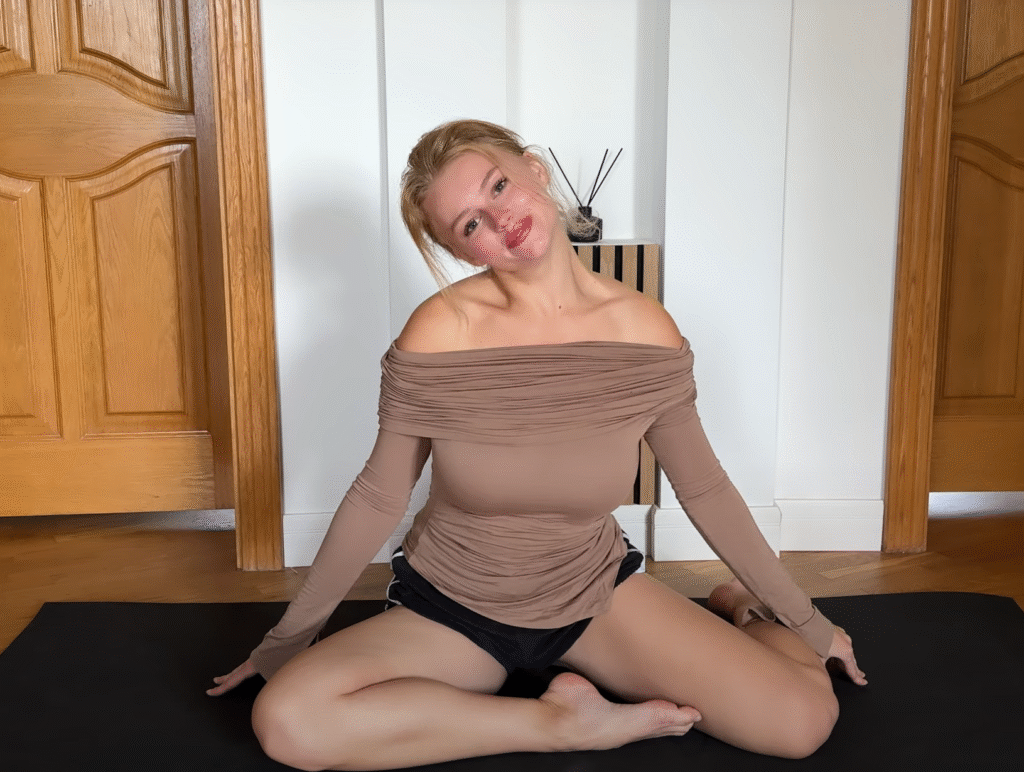
Before you begin, set up a comfortable space where you can move freely. You don’t need much—just a yoga mat or a soft surface, enough room to extend your arms and legs, and perhaps a cushion or towel for support. Play soothing music if you like, dim the lights, and make your space feel peaceful.
Consistency is key. Try to stretch at the same time each day—perhaps in the morning to awaken your body, or in the evening to unwind from the day. Even ten minutes daily can bring noticeable improvements over time.
Warm Up Before You Stretch
Before diving into deeper stretches, take a few minutes to warm up. Gentle movements increase blood flow to your muscles, making them more pliable and less prone to injury. Try:
- Neck rolls: Slowly circle your head in both directions.
- Shoulder rolls: Lift and roll your shoulders backward and forward.
- Torso twists: Stand tall and gently twist side to side to awaken the spine.
- March in place: Get your legs moving and your heart rate slightly up.
After two to three minutes of light movement, your body will be ready to begin deeper stretching.
Full-Body Stretch Routine for Beginners
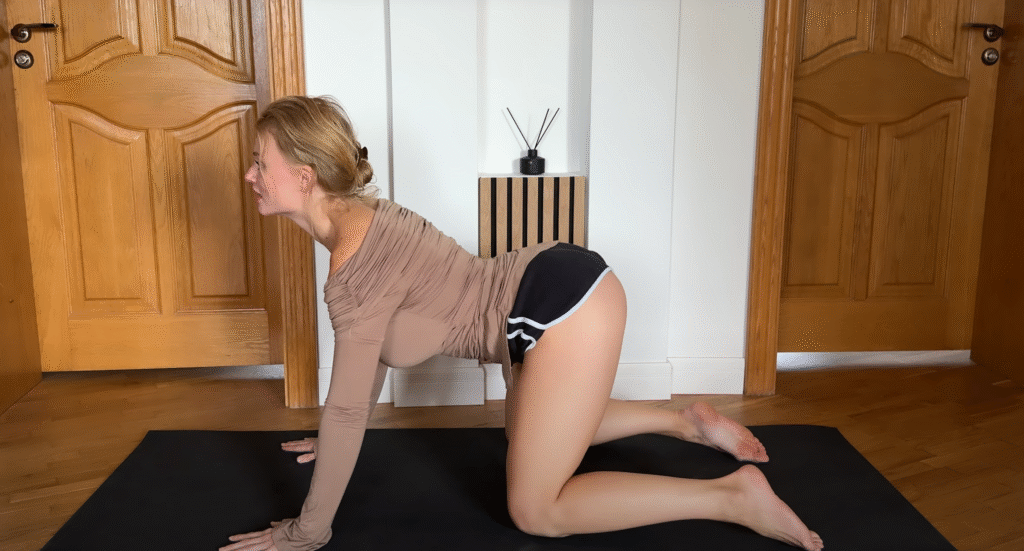
1. Standing Side Stretch
Start standing tall with your feet hip-width apart. Inhale as you lift your arms overhead, and exhale as you lean gently to one side. Feel a long stretch along your side body, from your hips to your fingertips. Breathe deeply for 20–30 seconds, then switch sides. This stretch opens the intercostal muscles and improves spinal flexibility.
2. Forward Fold
From standing, hinge at your hips and slowly fold forward, letting your upper body hang loose. You can bend your knees slightly to release tension in the hamstrings. Let gravity help your spine lengthen. Hold for 30 seconds while breathing deeply. This pose releases tension in the lower back and stretches the entire back of your body.
3. Cat-Cow Stretch (on all fours)
Come to a tabletop position with hands under shoulders and knees under hips. Inhale and arch your back (Cow Pose), lifting your head and tailbone. Exhale and round your spine (Cat Pose), drawing your navel in and tucking your chin. Move slowly and mindfully for 5–8 rounds. This flow stretches your spine, shoulders, and core, promoting flexibility and coordination.
4. Seated Forward Fold
Sit on the floor with your legs extended. Inhale, reach your arms overhead, and exhale as you fold forward over your legs. Keep your back long, and if your hamstrings feel tight, bend your knees slightly or use a strap around your feet. Hold for 30–45 seconds. This stretch is wonderful for the hamstrings, calves, and lower back.
5. Butterfly Stretch
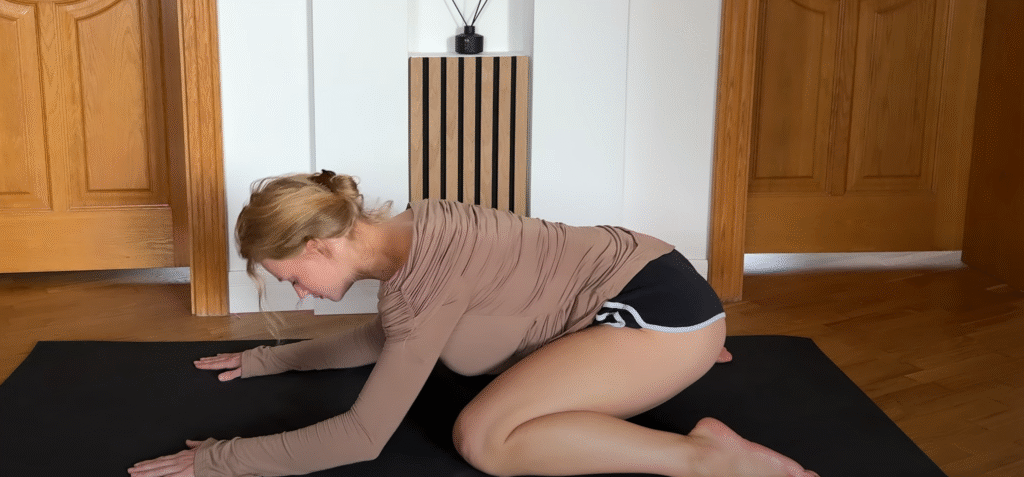
Sit tall, bring the soles of your feet together, and let your knees drop outward. Hold your feet with your hands and gently press your knees toward the floor. Keep your spine straight as you lean slightly forward. Breathe deeply for 30–60 seconds. This pose opens the hips and groin while improving inner thigh flexibility.
6. Lunge Hip Flexor Stretch
Step one foot forward into a low lunge, keeping your back knee on the floor. Sink your hips gently forward until you feel a stretch at the front of your hip and thigh. Keep your chest open and breathe slowly. Hold for 30 seconds, then switch legs. This stretch counteracts the tight hip flexors that result from long hours of sitting.
7. Child’s Pose
From your knees, sit back on your heels and stretch your arms forward, lowering your forehead to the mat. Relax your shoulders and let your chest sink toward the floor. Stay here for one to two minutes. This pose releases the lower back, hips, and shoulders while calming the mind.
8. Shoulder and Chest Opener
Clasp your hands behind your back and gently lift them as you open your chest. Keep your shoulders away from your ears and breathe deeply. This stretch helps relieve tension from sitting hunched over a desk or phone. Hold for 20–30 seconds.
9. Supine Twist
Lie on your back, bring one knee to your chest, then gently guide it across your body. Extend your opposite arm out to the side and gaze toward it. Feel a gentle twist through your spine. Hold for 30 seconds, then switch sides. This pose releases tension in the back and promotes spinal mobility.
10. Reclined Hamstring Stretch
Lie on your back and lift one leg toward the ceiling. Hold behind your thigh or use a strap to deepen the stretch. Keep the other leg extended on the floor. Hold for 30–45 seconds per leg. This simple move improves flexibility in your hamstrings and calves.
Tips for Safe and Effective Stretching
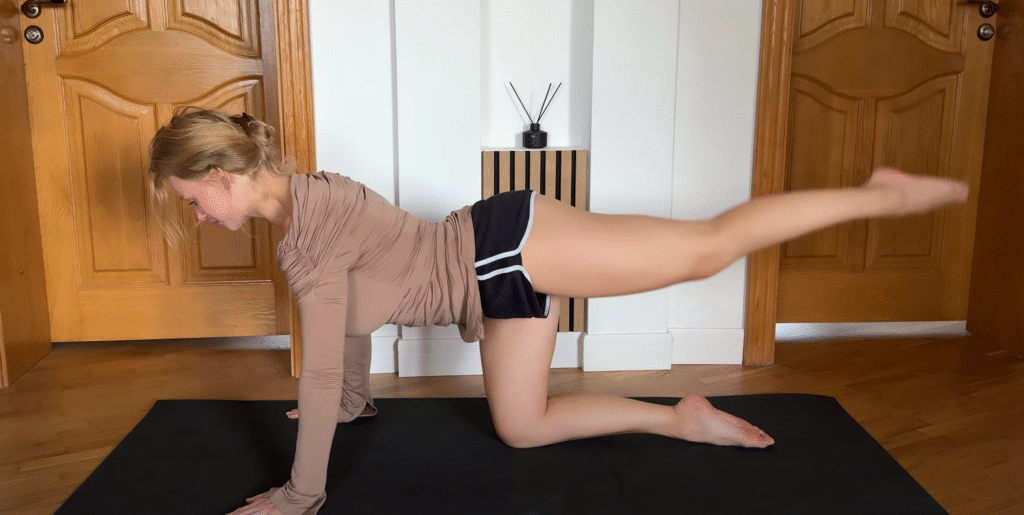
- Breathe deeply. Never hold your breath during a stretch. Inhale to lengthen, exhale to release tension.
- Don’t force it. Stretching should feel slightly challenging but never painful. Go only as far as your body comfortably allows.
- Stay consistent. Progress takes time. A few minutes each day is far more effective than one long session once a week.
- Balance both sides. Always stretch both sides of your body evenly to maintain symmetry.
- Listen to your body. Some days you may feel looser, other days tighter—adjust accordingly.
Benefits You’ll Notice Over Time
With regular practice, you’ll see gradual yet lasting improvements in your body and mind. Your flexibility will increase, muscles will lengthen, and everyday movements—like bending, reaching, or walking—will feel easier. Your posture will improve, reducing tension in your neck and shoulders. You’ll also feel calmer, as stretching encourages mindfulness and relaxation.
Even five to ten minutes a day can transform how you feel. Over time, you’ll develop not only physical flexibility but also mental resilience—a sense of patience and ease that extends beyond your mat.
Final Thoughts
Stretching at home is one of the simplest yet most powerful habits you can build for your health. You don’t need expensive equipment or hours of free time—just a few minutes of mindful movement each day. With every stretch, you release tension, open your body, and invite more freedom into your life.
Start slow, stay consistent, and enjoy the journey. Flexibility isn’t about perfection—it’s about progress and presence. So unroll your mat, take a deep breath, and begin your easy home stretching routine today. Your body and mind will thank you.
